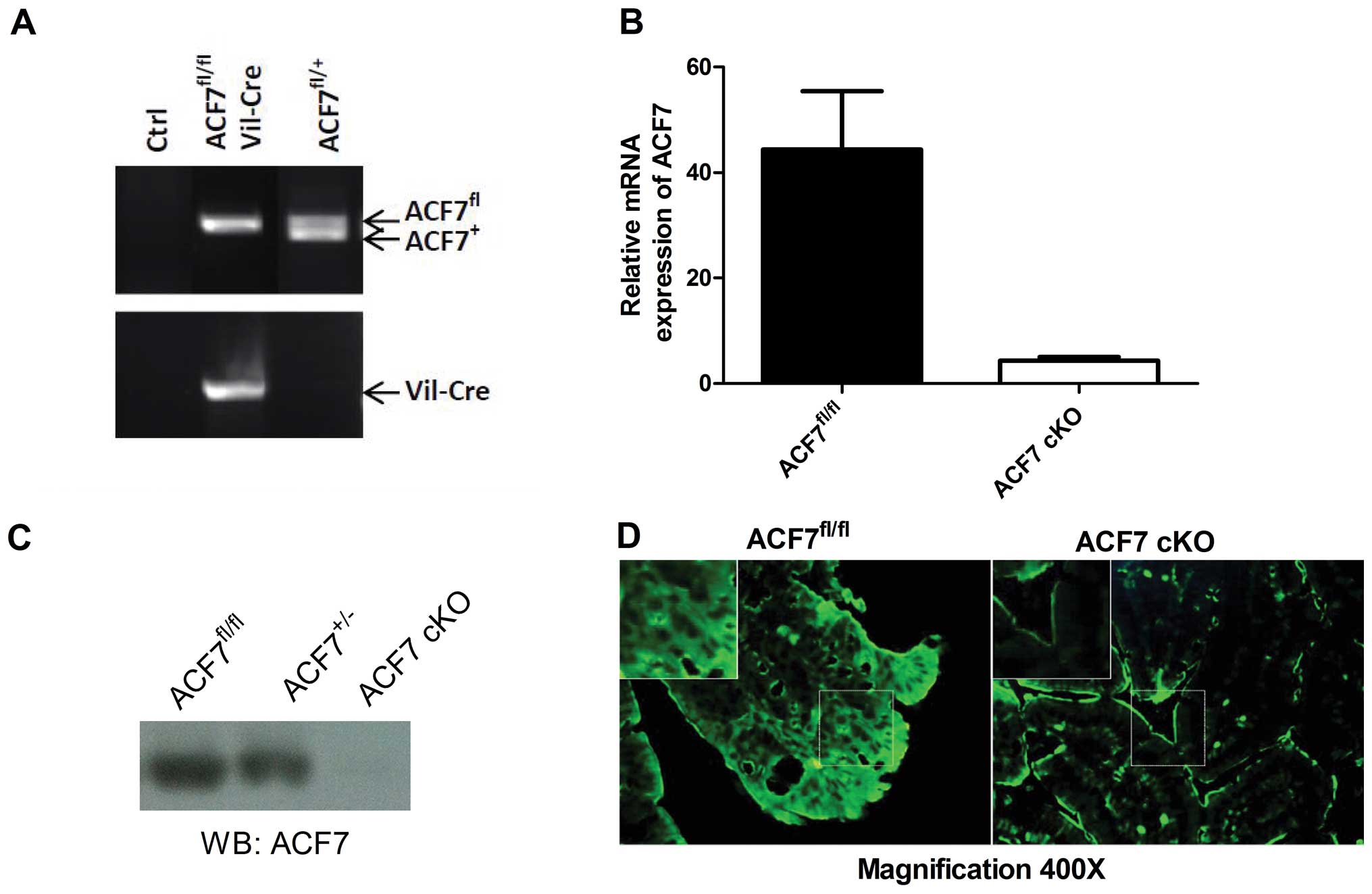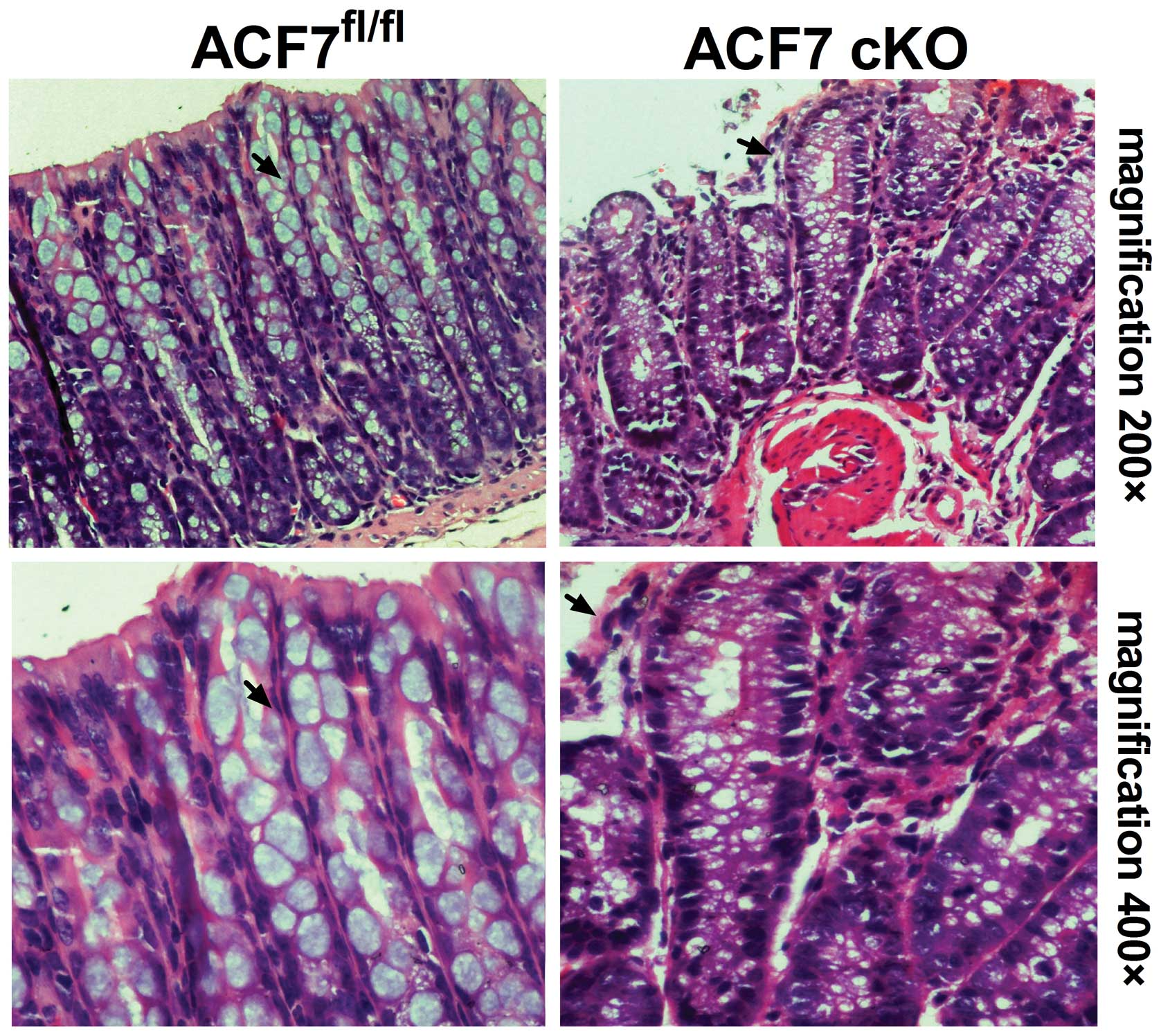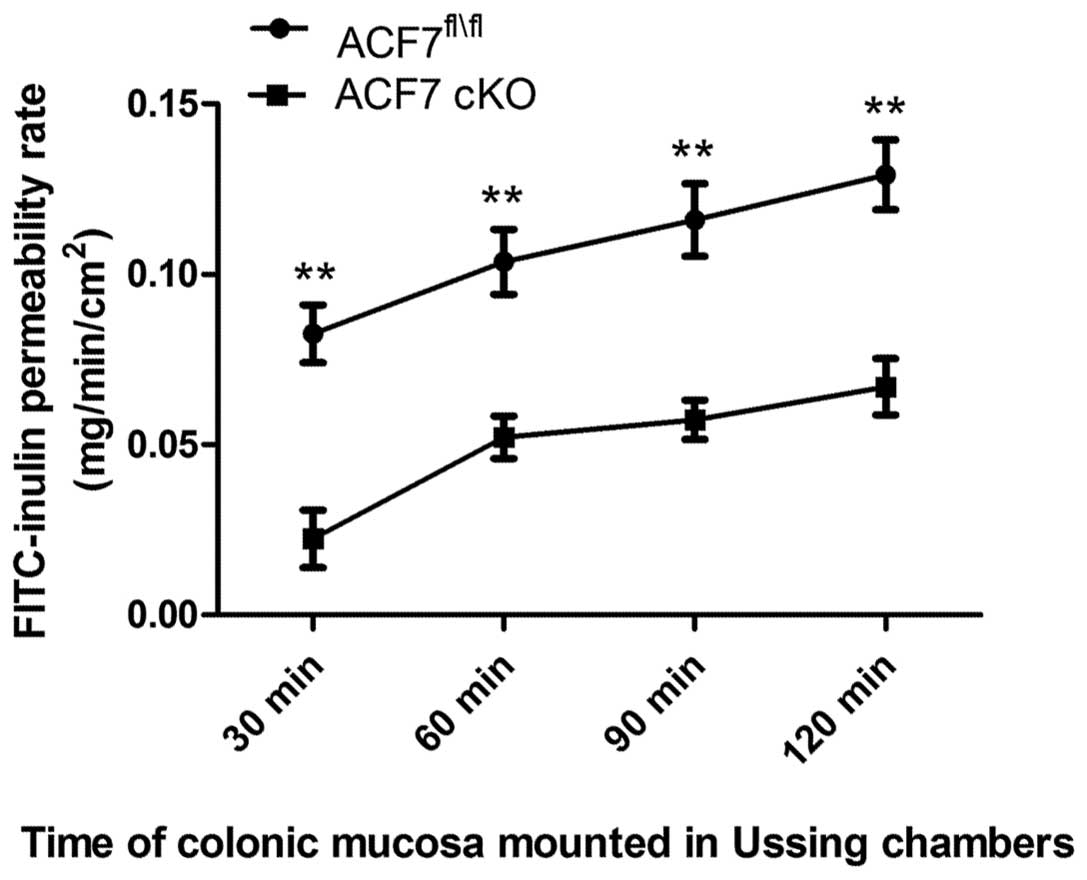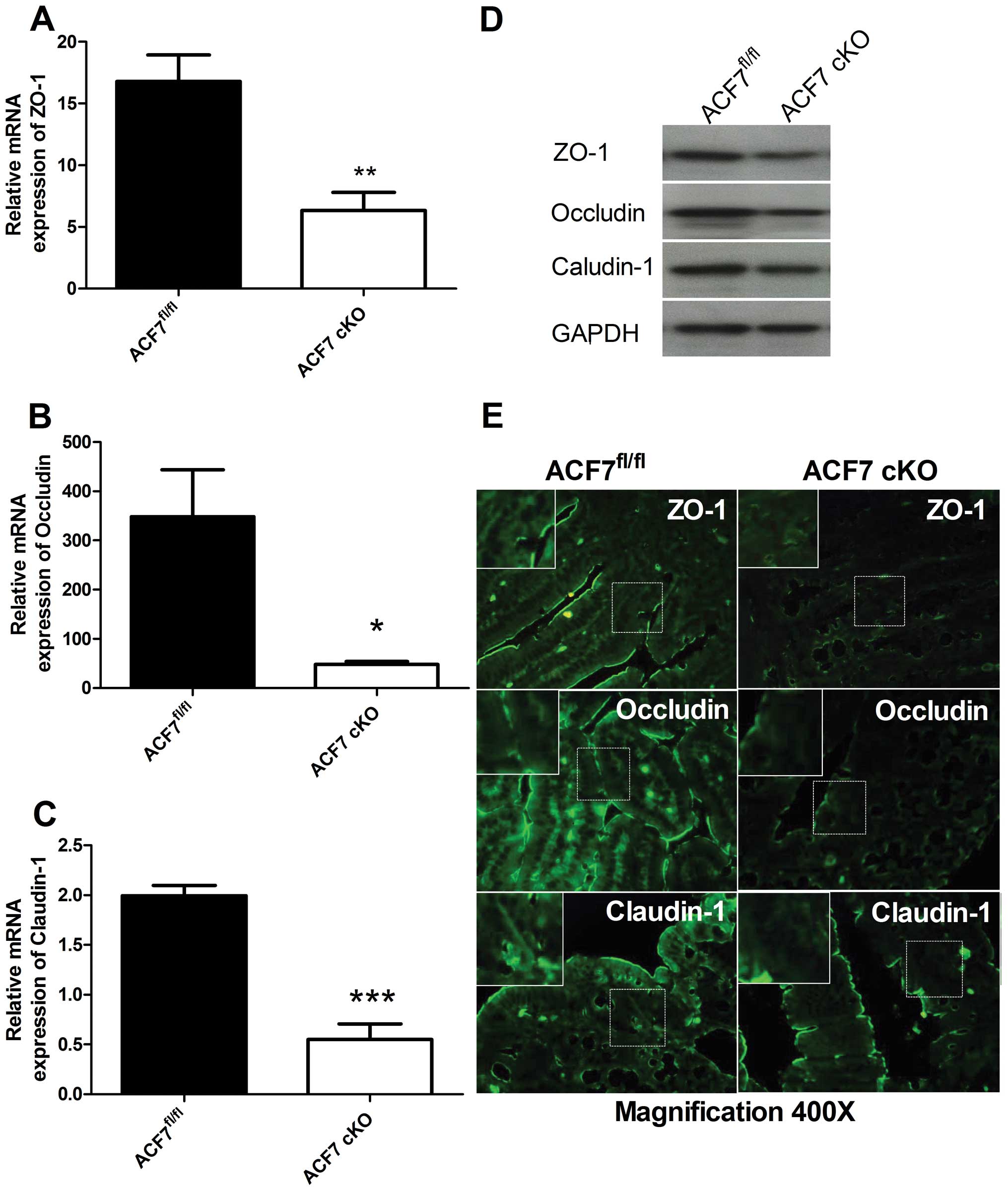|
1
|
Catalioto RM, Maggi CA and Giuliani S:
Intestinal epithelial barrier dysfunction in disease and possible
therapeutical interventions. Curr Med Chem. 18:398–426. 2011.
View Article : Google Scholar : PubMed/NCBI
|
|
2
|
Hossain Z and Hirata T: Molecular
mechanism of intestinal permeability: interaction at tight
junctions. Mol Biosyst. 4:1181–1185. 2008. View Article : Google Scholar : PubMed/NCBI
|
|
3
|
Gasbarrini G and Montalto M: Structure and
function of tight junctions. Role in intestinal barrier. Ital J
Gastroenterol Hepatol. 31:481–488. 1999.PubMed/NCBI
|
|
4
|
Ulluwishewa D, Anderson RC, McNabb WC,
Moughan PJ, Wells JM and Roy NC: Regulation of tight junction
permeability by intestinal bacteria and dietary components. J Nutr.
141:769–776. 2011. View Article : Google Scholar : PubMed/NCBI
|
|
5
|
Shen L, Su L and Turner JR: Mechanisms and
functional implications of intestinal barrier defects. Dig Dis.
27:443–449. 2009. View Article : Google Scholar : PubMed/NCBI
|
|
6
|
Madara JL, Stafford J, Barenberg D and
Carlson S: Functional coupling of tight junctions and
microfilaments in T84 monolayers. Am J Physiol. 254:G416–G423.
1988.PubMed/NCBI
|
|
7
|
Watanabe T, Noritake J and Kaibuchi K:
Regulation of microtubules in cell migration. Trends Cell Biol.
15:76–83. 2005. View Article : Google Scholar : PubMed/NCBI
|
|
8
|
Tsvetkov AS, Samsonov A, Akhmanova A,
Galjart N and Popov SV: Microtubule-binding proteins CLASP1 and
CLASP2 interact with actin filaments. Cell Motil Cytoskeleton.
64:519–530. 2007. View
Article : Google Scholar : PubMed/NCBI
|
|
9
|
Kodama A, Karakesisoglou I, Wong E, Vaezi
A and Fuchs E: ACF7: an essential integrator of microtubule
dynamics. Cell. 115:343–354. 2003. View Article : Google Scholar : PubMed/NCBI
|
|
10
|
Ghandehari H, Smith PL, Ellens H, Yeh PY
and Kopecek J: Size-dependent permeability of hydrophilic probes
across rabbit colonic epithelium. J Pharmacol Exp Ther.
280:747–753. 1997.PubMed/NCBI
|
|
11
|
Chen HJ, Lin CM, Lin CS, Perez-Olle R,
Leung CL and Liem RK: The role of microtubule actin cross-linking
factor 1 (MACF1) in the Wnt signaling pathway. Genes Dev.
20:1933–1945. 2006. View Article : Google Scholar : PubMed/NCBI
|
|
12
|
Wu X, Kodama A and Fuchs E: ACF7 regulates
cytoskeletal-focal adhesion dynamics and migration and has ATPase
activity. Cell. 135:137–148. 2008. View Article : Google Scholar : PubMed/NCBI
|
|
13
|
Arrieta MC, Madsen K, Doyle J and Meddings
J: Reducing small intestinal permeability attenuates colitis in the
IL10 gene-deficient mouse. Gut. 58:41–48. 2009. View Article : Google Scholar : PubMed/NCBI
|
|
14
|
Baker NT and Graham LL:
Campylobacter fetus translocation across Caco-2 cell
monolayers. Microb Pathog. 49:260–272. 2010. View Article : Google Scholar
|
|
15
|
Volpe DA: Application of method
suitability for drug permeability classification. AAPS J.
12:670–678. 2010. View Article : Google Scholar : PubMed/NCBI
|
|
16
|
Wu X, Shen QT, Oristian DS, et al: Skin
stem cells orchestrate directional migration by regulating
microtubule-ACF7 connections through GSK3β. Cell. 144:341–352.
2011.PubMed/NCBI
|
|
17
|
Austin CP, Battey JF, Bradley A, et al:
The knockout mouse project. Nat Genet. 36:921–924. 2004. View Article : Google Scholar : PubMed/NCBI
|
|
18
|
Brown SD and Hancock JM: The mouse genome.
Genome Dyn. 2:33–45. 2006. View Article : Google Scholar
|
|
19
|
Dinnyes A and Szmolenszky A: Animal
cloning by nuclear transfer: state-of-the-art and future
perspectives. Acta Biochim Pol. 52:585–588. 2005.PubMed/NCBI
|
|
20
|
Kühn R and Schwenk F: Advances in gene
targeting methods. Curr Opin Immunol. 9:183–188. 1997.
|
|
21
|
Madara JL, Barenberg D and Carlson S:
Effects of cytochalasin D on occluding junctions of intestinal
absorptive cells: further evidence that the cytoskeleton may
influence paracellular permeability and junctional charge
selectivity. J Cell Biol. 102:2125–2136. 1986. View Article : Google Scholar
|
|
22
|
Tsukita S and Furuse M: Occludin and
claudins in tight-junction strands: leading or supporting players?
Trends Cell Biol. 9:268–273. 1999. View Article : Google Scholar : PubMed/NCBI
|
|
23
|
Ye D, Guo S, Al-Sadi R and Ma TY: MicroRNA
regulation of intestinal epithelial tight junction permeability.
Gastroenterology. 141:1323–1333. 2011. View Article : Google Scholar : PubMed/NCBI
|
|
24
|
Yu AS, McCarthy KM, Francis SA, et al:
Knockdown of occludin expression leads to diverse phenotypic
alterations in epithelial cells. Am J Physiol Cell Physiol.
288:C1231–C1241. 2005. View Article : Google Scholar
|
|
25
|
Schulzke JD, Gitter AH, Mankertz J, et al:
Epithelial transport and barrier function in occludin-deficient
mice. Biochim Biophys Acta. 1669:34–42. 2005. View Article : Google Scholar : PubMed/NCBI
|
|
26
|
Furuse M and Moriwaki K: The role of
claudin-based tight junctions in morphogenesis. Ann NY Acad Sci.
1165:58–61. 2009. View Article : Google Scholar : PubMed/NCBI
|
|
27
|
Furuse M, Hata M, Furuse K, et al:
Claudin-based tight junctions are crucial for the mammalian
epidermal barrier: a lesson from claudin-1-deficient mice. J Cell
Biol. 156:1099–1111. 2002. View Article : Google Scholar : PubMed/NCBI
|
|
28
|
Piche T, Barbara G, Aubert P, et al:
Impaired intestinal barrier integrity in the colon of patients with
irritable bowel syndrome: involvement of soluble mediators. Gut.
58:196–201. 2009. View Article : Google Scholar : PubMed/NCBI
|
|
29
|
Keon BH, Schäfer S, Kuhn C, Grund C and
Franke WW: Symplekin, a novel type of tight junction plaque
protein. J Cell Biol. 134:1003–1018. 1996. View Article : Google Scholar : PubMed/NCBI
|
|
30
|
Fanning AS and Anderson JM: Zonula
occludens-1 and -2 are cytosolic scaffolds that regulate the
assembly of cellular junctions. Ann NY Acad Sci. 1165:113–120.
2009. View Article : Google Scholar : PubMed/NCBI
|
|
31
|
Noth R, Lange-Grumfeld J, Stüber E, et al:
Increased intestinal permeability and tight junction disruption by
altered expression and localization of occludin in a murine graft
versus host disease model. BMC Gastroenterol. 11:1092011.
View Article : Google Scholar : PubMed/NCBI
|













